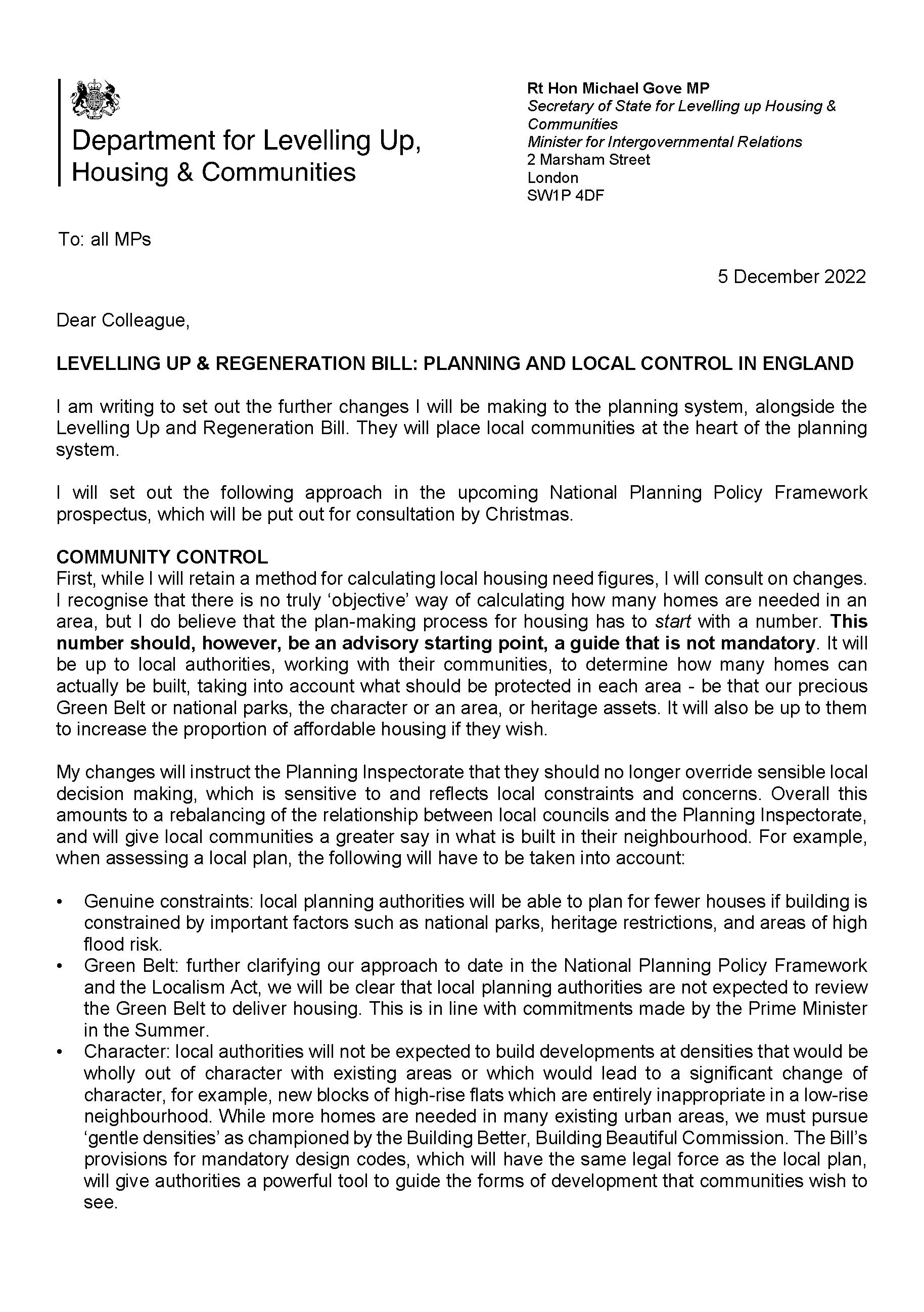
Ventola Projects Light Up Cambridge Tenpin Entertainment Facility
Georgia Banton • February 5, 2020

Having just recently completed a high-profile lighting contract at Cheshire Oaks Tenpin, Leicester-based provider of specialist electrical LED lighting installations, Ventola Projects, have gone on to apply their lighting genius to another popular leisure venue, this time in Cambridgeshire.
Cambridge Tenpin is an entertainment hub with bowling lanes, karaoke pods, pool tables and a cafe. As you can imagine, lighting is one of the most important elements in creating the right atmosphere and level of excitement for visitors to the facility and that’s why this particular client chose the expertise of Ventola.
The venue’s owners wanted a multi-functional LED system which incorporated the highest quality white light and a multitude of vibrant colours. Ease of control was high on their wish list too, as they needed to be able to manage the whole system in one action from a central PC, whilst also having the capability to control specific areas separately and remotely via an app or alternative on-site PC.
Of course none of these requests caused a problem for the experienced team at Ventola. They completed the project in just 3 weeks using their energy-efficient VAvR lighting system. With a combination of VAvR Linear Optics, CS16 Downlights, CS4 Downlights and VAvR Pixel Tape the overall effect was just exactly what Cambridge Tenpin wanted in creating the perfect environment for fun. The fact that the carefully chosen system is also low maintenance and low energy means that both the running costs and the environmental impact will be low too, a welcomed bonus for the facility owners.
Mick Ventola, Founder and Managing Director of Ventola Projects was pleased with the project from start to finish, telling us:
“Whilst we’ve got a great reputation in the entertainment sector, every one of these projects are unique and has its own characteristics. The biggest challenge at Cambridge Tenpin was choosing the right products for the different areas as each needed to have their own specific mood. As always, the team worked hard. We loved working on this facility, and we’re delighted with the final result.”
To find out more about the range of energy efficient lighting products which Ventola Projects use or see more of the fabulous venues they have transformed, visit http://ventola.co.uk/

January 11, 2023
Dear Colleague, LEVELLING UP ®GENERATION BILL: PLANNING AND LOCAL CONTROL IN ENGLAND I am writing to set out the further changes I will be making to the planning system, alongside the Levelling Up and Regeneration Bill. They will place local communities at the heart of the planning system. I will set out the following approach in the upcoming National Planning Policy Framework prospectus, which will be put out for consultation by Christmas. COMMUNITY CONTROL First, while I will retain a method for calculating local housing need figures, I will consult on changes. I recognise that there is no truly ‘objective’ way of calculating how many homes are needed in an area, but I do believe that the plan-making process for housing has to start with a number. This number should, however, be an advisory starting point, a guide that is not mandatory. It will be up to local authorities, working with their communities, to determine how many homes can actually be built, taking into account what should be protected in each area - be that our precious Green Belt or national parks, the character or an area, or heritage assets. It will also be up to them to increase the proportion of affordable housing if they wish. My changes will instruct the Planning Inspectorate that they should no longer override sensible local decision making, which is sensitive to and reflects local constraints and concerns. Overall this amounts to a rebalancing of the relationship between local councils and the Planning Inspectorate, and will give local communities a greater say in what is built in their neighbourhood. For example, when assessing a local plan, the following will have to be taken into account: • Genuine constraints: local planning authorities will be able to plan for fewer houses if building is constrained by important factors such as national parks, heritage restrictions, and areas of high flood risk. • Green Belt: further clarifying our approach to date in the National Planning Policy Framework and the Localism Act, we will be clear that local planning authorities are not expected to review the Green Belt to deliver housing. This is in line with commitments made by the Prime Minister in the Summer. • Character: local authorities will not be expected to build developments at densities that would be wholly out of character with existing areas or which would lead to a significant change of character, for example, new blocks of high-rise flats which are entirely inappropriate in a low-rise neighbourhood. While more homes are needed in many existing urban areas, we must pursue ‘gentle densities’ as championed by the Building Better, Building Beautiful Commission. The Bill’s provisions for mandatory design codes, which will have the same legal force as the local plan, will give authorities a powerful tool to guide the forms of development that communities wish to see. We are committed to ensuring that the planning system creates more beautiful and sustainable buildings. Through the Bill we are seeking to introduce a duty for all local councils to produce a design code covering the same area as the local plan, which will set simple clear minimum standards on development in that area – such as height, form and density. This measure will empower communities, working with local councils, to have a say on what their area will look like by setting clear standards for new development. I will announce more details shortly about how the Office for Place – which will be established to champion beautiful, popular and enduring design – will support local authorities and communities in this important work. The input of colleagues in further developing this approach will be most welcome. As the Prime Minister committed in the Summer, I will also review how the ‘soundness’ test for reviewing plans at examination is operated by the Planning Inspectorate. I will ensure that plans no longer have to be ‘justified’, meaning that there will be a lower bar for assessment, and authorities will no longer have to provide disproportionate amounts of evidence to argue their case. The effect of these changes will be to make absolutely clear that Local Housing Need should always be a starting point – but no more than that – and importantly, that areas will not be expected to meet this need where they are subject to genuine constraints. Inspectors will therefore be required to take a more reasonable approach to authorities that have come forward with plans that take account of the concerns of the local community, by taking a more pragmatic approach at examination which fully reflects this updated policy. For those areas that would like to bring forward their own method for assessing housing needs, I will be clear on the exceptional circumstances under which they may do so, for example where a case can be made for unusual demographic and geographic factors. This will be made clear in an updated National Planning Policy Framework and guidance to the Planning Inspector. LOCAL PLANS I want to change the system on the rolling five-year land supply. We will end the obligation on local authorities to maintain a rolling five-year supply of land for housing where their plans are up-to-date. Therefore for authorities with a local plan, or where authorities are benefitting from transitional arrangements, the presumption in favour of sustainable development and the ‘tilted balance’ will typically not apply in relation to issues affecting land supply. I also want to consult on dropping the requirement for a 20% buffer to be added for both plan making and decision making – which otherwise effectively means that local authorities need to identify six years of supply rather than five. In addition, I want to recognise that some areas have historically overdelivered on housing - but they are not rewarded for this. My plan will therefore allow local planning authorities to take this into account when preparing a new local plan, lowering the number of houses they need to plan for. Places with existing plans will benefit from the changes above, as they will be free of five-year land supply obligations provided that plan is up to date. However, I am aware that those with local plans at an advanced stage of preparation will not benefit from these changes so I will also put in place transitional arrangements. Where authorities are well-advanced in producing a new plan, but the constraints which I have outlined mean that the amount of land to be released needs to be reassessed, I will give those places a two year period to revise their plan against the changes we propose and to get it adopted. And while they are doing this, we will also make sure that these places are less at risk from speculative development, by reducing the amount of land which they need to show is available on a rolling basis (from the current five years to four). Communities will therefore have a much more powerful incentive to get involved in drawing up local plans. Only four-in-ten local authorities have up to date local plans and I am determined to change this. They can protect the important landscapes they cherish, direct homes to the places they want, and adopt design codes to secure the houses they want to see. Once a plan is in place, these changes mean that they will no longer be exposed to speculative developments on which they have less of a say. I will increase community protections afforded by a neighbourhood plan against developer appeals – increasing those protections from two years to five years. The power of local and neighbourhood plans will be enhanced by the Bill; and this will be underpinned further through this commitment. Adopting a plan will be the best form of community action - and protection. Furthermore, we will clarify and consult on what areas we propose to be in scope of the new National Development Management Policies, and we will consult on each new Policy before it is brought forward by the Government. National Development Management Policies will also not constrain the ability of local areas to set policies on specific local issues. To support the delivery of these, and other planning changes, we must ensure that planning departments are properly resourced through a national fee increase. We have announced our intention to increase fees, including doubling fees for retrospective application where breaches of planning have occurred, and we intend to consult on the detailed proposals for such increases in planning fees as soon as possible. In addition to increasing fees we intend to also consult on a new planning performance framework that will monitor local performance across a broader set of measures of planning service delivery, including planning enforcement. BUILD OUT We need to hold developers to account so that desperately needed new homes are built, and I already have a significant package of measures in the Bill to do this, including public reporting and declining new planning applications on a site if developers are failing to build out. I will consult on two further measures: i) on allowing local planning authorities to refuse planning applications from developers who have built slowly in the past; and ii) on making sure that local authorities who permission land are not punished under the housing delivery test when it is developers who are not building. To make sure we are doing all we can to address this important issue, I will also consult on a new approach to accelerating the speed at which permissions are built out, specifically on a new financial penalty. In the summer, the Prime Minister correctly highlighted the importance of tackling this issue. I believe this new package will do so. CHARACTER OF A DEVELOPER I have heard and seen examples of how the planning system is undermined by irresponsible developers and landowners who persistently ignore planning rules and fail to deliver their legal commitments to the community. That is wrong, and to make it worse, this behaviour is then ignored if they seek planning permission again. I therefore propose to consult on the best way of addressing this issue, including looking at a similar approach to tackling the slow build out of permissions, where we will give local authorities the power to stop developers getting permissions. BROWNFIELD FIRST The Government is investing to incentivise and enable brownfield development. Homes England, our housing delivery arm, is spending millions on acquiring sites in urban areas to regenerate for new housing. We are also allocating over £800m to mayoral and local authorities to unlock over 60,000 new homes on brownfield land, as part of our wider brownfield and infrastructure funding package. We have already tilted the playing field in favour of brownfield and cities through our urban uplift and scrapped the 80/20 funding rule that focused investment in Greater London. This means we are instead investing more homes in the North and Midlands to relieve pressure on the South East. 4 We know urban regeneration is working. City centres that were depopulating in the 1990s are now seeing their populations rise. Manchester city centre, for example, has transformed with new homes and commercial spaces. We will continue to seek further development in towns and cities through our permitted development rights, which allow change from commercial to residential use. This route has provided over 82,000 housing units in the last six years. But I know we need to do more, and we will do that. The new Infrastructure Levy will be set locally by local planning authorities. They will be able to set different Levy rates in different areas, for example lower rates on brownfield over greenfield to increase the potential for brownfield development. That will allow them to reflect national policy, which delivers our brownfield first pledge by giving substantial weight to the value of using brownfield land. As the Prime Minister committed to in the summer, we will also continue to get cities building more new houses, and stop them offloading their responsibilities to provide new housing onto neighbouring green fields by ending the so-called ‘duty to co-operate' which has made it easier for urban authorities to impose their housing on suburban and rural communities. The Bill also enables gentle densification through Street Votes and design codes, allowing communities to consent to add storeys to existing dwellings with the increase in value going to local people. I will consult to see what more we can do in national policy to support development on small sites particularly with respect to affordable housing and I will launch a review into identifying further measures that would prioritise the use of brownfield land. To help make the most of empty premises including those above shops, I am reducing the period after which a council tax premium can be charged so that we can make the most of the space we already have. I will also provide further protection in national policy for our important agricultural land used for food production, making it harder for developers to build on it. THE HOUSING MARKET Housing plays a key role in the lives of all our constituents and buying a home is one of the most important decisions a family takes – but too many new homes are bought by overseas investors speculating on the housing market, who leave them empty or flip them to holiday rentals. The Bill takes steps to address that, with council tax measures on empty homes, and we already have additional stamp duty rates on non-resident buyers. Specifically, I intend to table an amendment at Commons Report to enable a registration scheme for short term lets in England, which would be discretionary for local authorities. The details of how the scheme would be administered will be consulted on before summer recess, with a view to the scheme being up and running as soon as possible thereafter. I will also consult on going further still and reviewing the Use Classes Order so that it enables places such as Devon, Cornwall, and the Lake District to better control changes of use to short term lets if they wish. I have asked the Competition and Markets Authority to consider undertaking a market study. I believe the case is clear for them to take this forward, but respect their independence as they come to a decision. No planning reforms will ever be perfect, but I judge that the Bill, alongside the broader policy changes that I am proposing above, will leave us with a significantly improved planning system than the status quo. These reforms will help to deliver enough of the right homes in the right places and will do that by promoting development that is beautiful, that comes with the right infrastructure, that is done democratically with local communities rather than to them, that protects and improves our environment, and that leaves us with better neighbourhoods than before. A Written Ministerial Statement regarding all of these changes will be made in Parliament tomorrow. Rt Hon Michael Gove MP Secretary of State for Levelling Up, Housing & Communities Minister for Intergovernmental Relations

By Charnwood Borough Council
•
March 25, 2022
R esidents are being urged to help give Charnwood a spring clean and the borough council is offering free litter picking packs to help. Charnwood Borough Council has a number of litter pickers, high-vis jackets, and litter bags to give away as part of Keep Britain Tidy’s Great British Spring Clean which runs between March 25 and April 10. The Council has also arranged for its waste partner Serco to pick up bags litter collected by local groups. Cllr Leigh Harper-Davies, the Council’s lead member for waste, said: “We know residents are proud of Charnwood and want to keep it a clean and tidy place and therefore we want to support that amazing community effort. “I’m delighted we can offer a number of litter-picking packs and would encourage people to come forward. “Looking after the environment is one of the Council’s top priorities and almost every day, our waste partner Serco has teams out in the borough keeping our streets and parks free from litter.” Litter pickers, high-vis jackets and bags will be distributed on a first-come, first-served basis and people are being urged to get in touch with the Council as soon as possible. There will be a limit of six equipment packs per groups, and the Council will also accept requests from individuals. To request a litter picking kit, visit the Council website, www.charnwood.gov.uk/SpringCleanCharnwood The Great British Spring Clean is back for its seventh year and Keep Britain Tidy’s message is simple, join its #BigBagChallenge and pledge to pick up as much litter as you can during the campaign. Find out more, including top tips, at www.keepbritaintidy.org If you are sharing your litter picking efforts on social media, use the hashtags #GBSpringClean #BigBagChallenge #CleanGreenCharnwood #SpringCleanCharnwood

By Ian Cockerill
•
March 25, 2022
S ince last November Blaby District Council has been working tirelessly to resolve the landfill gas issues at Huncote Leisure Centre, following the discovery of elevated levels during routine maintenance works. Throughout this period, a large amount of work has been undertaken, including the installation of gas extraction systems, venting wells, water sampling equipment and monitoring points. The Council has a legal duty to prevent any landfill gas or contaminants from leaving the site and to keep on-site gas levels below safe thresholds. To ensure a long-term solution is delivered further works need to take place whilst monitoring continues during high and low pressure atmospheric conditions, as landfill gas levels vary depending on the pressure in the atmosphere. Therefore we can confirm that Huncote Leisure Centre and the surrounding site, including the public footpaths and parish council sports field, will continue to remain closed for the foreseeable future. Over the last few months some people have removed, or even damaged the fencing in place to protect people in order to walk over the affected fields. To maximise the safety of everyone and to ensure the security of the site, improved fencing will be erected around the site. The site will remain closed for the foreseeable future to enable us to ensure the long-term safety of people using the site. The Council’s priority remains to ensure that the site and surrounds are made safe for the long term, and residents and any future site users are protected. We will continue to revisit our decision to keep the site closed regularly, in close liaison with, and on the advice of our specialist contractors. We appreciate that this is a loss of amenity for those people that use the site and can assure you we are doing all we can to ensure the site is safe, and we thank you all for your patience. Residents living around the site should continue to be reassured that there is no immediate risk to property. Leicestershire Fire and Rescue Service have confirmed that residents do not need to keep their windows and doors closed and we are continuing to monitor the landfill gas levels of those properties within the vicinity of the site, whilst any work continues. Councillor Terry Richardson, Leader of Blaby District Council, said: “The decision to keep the whole of the Huncote site closed is not one we have taken lightly. A lot of time has been spent by our officers and contractors, who have worked incredibly hard to try and reduce the landfill gas levels. “We are increasing the amount of money we had previously committed to make sure that these works are undertaken, but we are under no illusions that there is still work to do to get us into the position we need to be in for the site to be safe for the long term. “This is an area of land that was a landfill site until the 1970s at a time when it was thought landfill sites would decompose and stop producing gas around 10 years after they stopped being used. In fact we now know it can take anywhere from 100-150 years and sometimes even longer for this to happen. “With little or no checks on what was put into the old landfill site, it has meant that there is a mix of items decomposing at different rates, which is causing the excess landfill gas coming from the site. “We would like to once again thank everyone in the local community and those who have previously used the site for their patience.”

By Ian Cockerill
•
March 23, 2022
A brand new detailed map of Blaby District has been released giving visitors to the district the chance to find out more about the area’s local attractions. Showcasing the walks, restaurants and cafes, accommodation, activities and the location of Fosse Foxes across the District of Blaby, the new maps are the first time residents and visitors to the district have been able to pick up a copy of a detailed guide to the local area. The maps have been launched at the start of English Tourism Week, the national campaign promoting the best attractions and places to visit both across the country and right here on our doorstep. An official launch of the guide took place at the popular Everards Meadows with Councillor Sharon Coe and Alberto Costa, MP for South Leicestershire. Since opening in 2019, Everards Meadows has become the go-to place for many people. The site includes the independent Jennos Coffee House, Rutland Cycling and Everards Beer Hall and Restaurant. The map and guide is available online at www.visitblaby.org.uk and will shortly be found in businesses and libraries across the district, including those part of the Blaby District Tourism Partnership. The Visit Blaby website also has more detailed information about the tourist attractions across Blaby District. Councillor Sharon Coe, Portfolio Holder for Health, Wellbeing, Community Engagement and Business Support, said: “We are very excited to be launching our new map and guide to the district. We are lucky to have so many brilliant and popular attractions in the district and it’s fantastic for people to have the chance to pick up a copy and see for themselves just how much there is available to do. “As visitors continue to flock back to village centres following the pandemic, we are proud to be supporting local businesses with initiatives like this to continue raising the profile of our area.” Alberto Costa, MP for South Leicestershire, said: “I was delighted to attend the launch of Blaby District Council’s new Tourism Map and Guide to coincide with English Tourism Week at Everards Meadows. “Tourism is such a key part of our local and national economy, and the beautiful Blaby District already has so much to offer visitors to the county in the form of vibrant shopping parks, historic sites and national attractions, and it’s brilliant to see these local hotspots highlighted for those visiting South Leicestershire.” Funding for the maps has been provided by Welcome Back Funding from the European Regional Development Fund.

By Charnwood Borough Council
•
March 22, 2022
A website to promote Charnwood’s exciting offer to visitors has been launched. Discover Charnwood has been developed by the borough council to showcase the area’s unique story along with its wonderful attractions and vibrant towns and villages. Charnwood’s landscape was sculpted by the forces of nature nearly 600 million years ago and its unique geological history is of global importance. At the heart of the borough is Loughborough, home to the last working bell foundry in the UK, 800-year-old markets and fairs, Great Central Railway, and the renowned Loughborough University. Cllr Jonathan Morgan, Leader of Charnwood Borough Council, said: “Charnwood is quite simply world-class in every way. We have stunning landscapes which help tell the tale of our evolution, fascinating heritage, and a bold and bright future. Discover Charnwood brings all of this into one place so we can better tell our story, promote the area to visitors and encourage them to stay for longer and explore.” Cllr Shona Rattray, the Council’s lead member for business support, said: “We have created Discover Charnwood to support the local tourism economy and the many businesses it involves. We will be promoting the Discover Charnwood website over the coming months to help attract more visitors to the area and clearly in this digital age, we also want to drive visitors to the websites of our local businesses and attractions so they can take bookings. We want to work with the local tourism sector to develop the site and make it work for everyone.” The borough of Charnwood includes a host of attractions and distinctive features. Part of it lies within Charnwood Forest which with its rich geological and quarrying history and other unique characters is bidding to become a UNESCO Global Geopark. Geoparks are areas of international geological significance which are managed with a holistic concept of protection, education, and sustainable development. Taylor and Co Bellfoundry in Loughborough is also unique. Taylor’s is the last working bell foundry in the country and supplies bells that can be heard around the world. It is currently planning a £5 million revamp to preserve it and improve the visitor experience. The borough is also home to the stunning landscapes of Bradgate Park, Beacon Hill and the Outwoods plus many hidden gems like Morley Quarry at Shepshed. The Council has developed the website with tourism specialists Leicestershire Promotions. Martin Peters, chief executive of Leicestershire Promotions, said: “Discover Charnwood is a fantastic platform for bringing more visitors to the area. We now look forward to working with accommodation and attraction operators developing exciting package offers and creating even more reasons to visit.” A leaflet to celebrate the area’s heritage is also being developed and it will be launched in the next few weeks. To find out more, visit www.discovercharnwood.co.uk You can also follow @DiscoverCharn on Twitter and if you want to share your pictures of the area, use the hashtag #DiscoverCharnwood. The Discover Charnwood website has been funded thanks to the Welcome Back Fund, which is supported by the European Regional Development Fund.

By Ian Cockerill
•
March 22, 2022
A Jobs Fair offering vacancies in tourism, retail and hospitality is being held by Blaby District Council at Everards Meadows on Wednesday 30 March. District-based businesses will be showing off the range of jobs they have available and are looking to fill at the event, taking place from 10am-3pm. Everards are kindly hosting the event at their Everards Meadows site, which has fast become one of the district’s tourism hotspots since its recent opening. Up to three hours parking is available at Everards Meadows on Cooper Way, LE19 2AN. Companies in attendance include event hosts Everards and includes Rutland Cycling, who have 22 jobs up for grabs across their company. The Marriott Hotel, Palmers Garden Centre and 360 Play will also have a stand at the event. The Work and Skills Leicestershire team will be at the event to offer help and support for people looking to get into work. Their service gives FREE advice and support, including CV writing skills, interview techniques and learning and training opportunities. Councillor Sharon Coe, Portfolio Holder for Health, Wellbeing, Community Engagement and Business Support, said: “This event is a fantastic opportunity for anyone interested in working within the retail, tourism or hospitality sectors to find their ideal position with the wide variety of businesses attending. After the success of our HGV recruitment event last year, we have been very keen to work with different sectors to identify any labour or skills shortages and help improve employment opportunities for both residents and businesses. We also wanted to thank Everards for allowing us to use the brilliant Everards Meadows as the host of the event.” Alberto Costa, MP for South Leicestershire, said: ““I am delighted to see the Jobs Fair taking place at Everards Meadows later this month. With a number of fantastic local businesses taking part, this is an excellent opportunity for anyone looking for a new role, or anyone wishing to get into the retail, hospitality or tourism industries. I am so pleased that South Leicestershire has such a vibrant and resilient economy, especially as we continue our recovery from the pandemic, and I am hugely grateful to Blaby District Council and the businesses involved for putting together such a brilliant event.” Blaby District Council is committed to supporting local people find opportunities in the district and helping businesses to fill vacancies. Last October the Council helped to organise a HGV Recruitment event. More sector-specific events are anticipated to be hosted in the coming months. More information about the event is available at www.blaby.gov.uk/job-fair
Company
Contact Us
OpenBox Promotions Ltd
42 Forest Rise, Kirby Muxloe, Leicestershire, LE9 2HQ
Registered in England and Wales Reg Number 073 366 20 - VAT Number 105 481 928
©
OpenBox Promotions Ltd.
